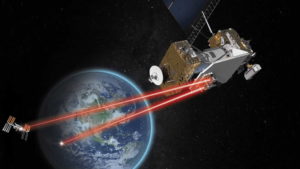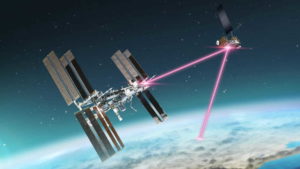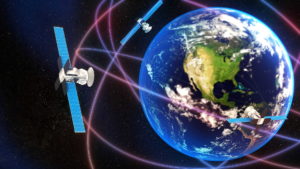NASA is developing Two-way End-to-End Laser Communications relay systems, a revolutionary technology that will revolutionize precise and quick communication in the wide reaches of space, where missions to explore and research the unknown are necessary. The Integrated Laser Communications Relay Demonstration (ILLUMA-T), a ground-breaking NASA project, is expected to completely transform communication for missions in low Earth orbit.
In simple words, The goal of NASA laser communications relay system is to transform space communication through the use of cutting-edge technologies. For missions aiming at exploring and understanding the unknown, this two-way laser communication system will allow faster and more exact data exchange in the vast expanses of space.
Space has a lot to explore and it often seems that we have done nothing when seeing the vastness and expansion. To facilitate the process, it is made to ease communication in space.
Conventional space communication techniques frequently use radio waves, which have a slow data transmission capability. On the other hand, Two-way End-to-End Laser Communications (ILLUMA-T) communicate using lasers, which are considerably faster and capable of carrying more data. It is comparable to switching from a slow dial-up internet connection to a lightning-fast fiber-optic connection intended for space travel.
This technique will be especially helpful for low-Earth orbit missions when prompt and dependable communication is crucial.
NASA can significantly increase the effectiveness and capability of space missions with ILLUMA-T, which will facilitate the collection and transmission of data from satellites and spacecraft. ILLUMA-T is essentially a space communication game-changer that advances our comprehension of the mysteries of the universe.
What Is Laser Communications Relay System?

A laser communications relay system functions similarly to an extremely quick and far-reaching information carrier. It transmits data from one location to another using laser beams. Think of it as a high-tech torch with rapid information transmission. These technologies help transport data, such as images or films, over very great distances faster than traditional means. They are utilized both in space and on Earth. They function by using lasers to beam data into the sky or space, facilitating faster and more dependable communication.
NASA has a history of pushing technological limits and this time with a Two-way End-to-End Laser Communications\NASA laser communications relay system. The CIA is looking to laser communications in its pursuit of improved space communication.
Infrared light that is invisible to the human eye is used in laser communications, which transmits and receives data far more quickly than regular radio waves. This technology speeds up scientific research and improves space exploration by allowing spacecraft to send enormous volumes of data back to Earth in a single transmission.
Two-way End-to-End Laser Communications Relay System (ILLUMA-T)

ILLUMA-T, The abbreviation means Integrated Laser Communications Relay Demonstration Low Earth Orbit User Modem and Amplifier Terminal. It is intended to prove the advantages of laser communications for low-Earth orbit missions.
This project is under the management of the Space Communications and Navigation (SCaN) program of NASA and is tasked with accomplishing an incredible first end-to-end, bi-directional laser communications relay. This relay runs concurrently with the December 2021 launch of the Laser Communications Relay Demonstration (LCRD).
To exemplify the advantages of laser communications, LCRD is conducting experiments while in geosynchronous orbit. These examinations test network capabilities, look into better navigation and examine how the atmosphere affects laser signals.
Technology for space communication has advanced significantly as a result of the cooperation between ILLUMA-T and LCRD. After it is outside the International Space Station (ISS), ILLUMA-T will carry out NASA’s first-ever in-orbit demonstration of two-way laser relay capabilities. This is how it operates:
The telescope and two-axis gimbal in ILLUMA-T’s optical module allow it to point at and follow the LCRD in geosynchronous orbit. The payload itself is roughly the size of a conventional refrigerator, while the optical module is around the size of a microwave.

- The remarkable 1.2 gigabits per second that ILLUMA-T will transmit data from the ISS to LCRD is rather outstanding. This data will then be sent by LCRD to optical ground stations in Hawaii or California.
The LCRD Mission Operations Center in New Mexico will receive the data after which it will be forwarded to the ILLUMA-T ground operations teams at NASA’s Goddard Space Flight Center in Maryland. The data will then be examined by engineers to guarantee its quality and correctness.
The objective is to create a smooth, end-to-end relay system that greatly expands the volume of data that can be transmitted to and received from the International Space Station.
- For Earth scientists performing research in a variety of disciplines, such as biology, physics, technology, and Earth observation, on board the International Space Station, this development is crucial.
With ILLUMA-T’s improved data speeds, important research data can be transmitted more quickly. An average film can be sent at an astounding 1.2 gigabits per second in less than a minute.
- One of NASA’s main objectives is to include Laser communication technology in space communication networks.
NASA hopes to bring in a new era of space communication capabilities by demonstrating the advantages of laser communications systems for both near-Earth and deep space missions. The integration of laser communications with NASA’s current space communication networks, the Near Space Network and Deep Space Network, is the main goal.
The Ending Notes

To put it briefly, the ILLUMA-T and LCRD projects of NASA are dignified to completely transform space communication.
This is a significant advancement in space communication capability, not simply a minor step for NASA.
The space exploration program of NASA includes not just astronomy but also the development of advanced technology necessary to enable such exploration.
The incorporation of a Two-way End-to-End Laser Communications Relay System is going to be central to the future of space communication.













